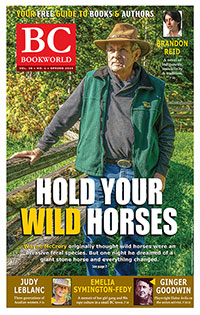Born in England in 1943, Francis Mansbridge came to Canada with his parents in 1946. In 1992, after fifteen years as an English professor, Mansbridge decided he'd rather be an archivist. He studied at the University of British Columbia and worked at the North Vancouver Museum and Archives. This work resulted in Launching History: The Saga of the Burrard Drydock (Harbour, 2002), winner of the BC Lieutenant-Governor's award for history, and the first history of the forested mountain above West Vancouver, Hollyburn: The Mountain and the City (Ronsdale, 2008).
In Dreamers & Designers (Harbour, 2018), Francis Mansbridge traces the history of West Vancouver and the pivotal players in its evolution, including the Squamish people of Capilano Reserve No. 5 and the British Pacific Properties. The text is enlivened by accounts of the major personalities involved in the shaping of West Vancouver and sidebars featuring the voices of West Vancouverites throughout the ages. With archival and contemporary photographs that provide a visual account of the changing landscape, Dreamers & Designers paints a vivid picture of how West Vancouver’s unique setting has defined the dynamic coastal community and the lives of those who reside there.
Prior to working at the North Vancouver Museum and Archives, Mansbridge had collaborated with the West Vancouver Historical Society to produce Arrivals and Departures: The Ferries and the People of Horseshoe Bay (2014) and Cottages to Community: The Story of West Vancouver’s Neighbourhoods (2011).
A contributor to both newspapers and literary journals, Mansbridge is also the author of God's Recording Angel, a biography of Irving Layton, and editor of Wild Gooseberries: The Selected Letters of Irving Layton.
In Vancouver Then And Now (Thunder Bay / Raincoast, 2010), Mansbridge contrasts archival photos of Vancouver locations with contemporary photos, mirroring a concept already used in Vancouver books by Roland Morgan and Michael Kluckner.
BOOKS:
Irving Layton: God's Recording Angel (ECW, 1995)
Launching History: The Saga of the Burrard Drydock (Harbour, 2002)
Hollyburn: The Mountain and the City (Ronsdale, 2008)
Cottages to Community: The Story of West Vancouver’s Neighbourhoods (West Vancouver Historical Society, 2011)
Arrivals and Departures: The Ferries and the People of Horseshoe Bay (West Vancouver Historical Society, 2014)
Dreamers & Designers: the Shaping of West Vancouver (Harbour, 2018) $29.95 978-1-55017-851-7
[BCBW 2018] "Local History" "Maritime"
Review of the author's work by BC Studies:
Launching History: The Saga of Burrard Dry Dock
In Dreamers & Designers (Harbour, 2018), Francis Mansbridge traces the history of West Vancouver and the pivotal players in its evolution, including the Squamish people of Capilano Reserve No. 5 and the British Pacific Properties. The text is enlivened by accounts of the major personalities involved in the shaping of West Vancouver and sidebars featuring the voices of West Vancouverites throughout the ages. With archival and contemporary photographs that provide a visual account of the changing landscape, Dreamers & Designers paints a vivid picture of how West Vancouver’s unique setting has defined the dynamic coastal community and the lives of those who reside there.
Prior to working at the North Vancouver Museum and Archives, Mansbridge had collaborated with the West Vancouver Historical Society to produce Arrivals and Departures: The Ferries and the People of Horseshoe Bay (2014) and Cottages to Community: The Story of West Vancouver’s Neighbourhoods (2011).
A contributor to both newspapers and literary journals, Mansbridge is also the author of God's Recording Angel, a biography of Irving Layton, and editor of Wild Gooseberries: The Selected Letters of Irving Layton.
In Vancouver Then And Now (Thunder Bay / Raincoast, 2010), Mansbridge contrasts archival photos of Vancouver locations with contemporary photos, mirroring a concept already used in Vancouver books by Roland Morgan and Michael Kluckner.
BOOKS:
Irving Layton: God's Recording Angel (ECW, 1995)
Launching History: The Saga of the Burrard Drydock (Harbour, 2002)
Hollyburn: The Mountain and the City (Ronsdale, 2008)
Cottages to Community: The Story of West Vancouver’s Neighbourhoods (West Vancouver Historical Society, 2011)
Arrivals and Departures: The Ferries and the People of Horseshoe Bay (West Vancouver Historical Society, 2014)
Dreamers & Designers: the Shaping of West Vancouver (Harbour, 2018) $29.95 978-1-55017-851-7
[BCBW 2018] "Local History" "Maritime"
Review of the author's work by BC Studies:
Launching History: The Saga of Burrard Dry Dock
Articles: 2 Articles for this author
Launching History: The Saga of Burrard Dry Dock
Article
Through no fault of the riveters, platemakers, hammer drivers, bolt threaders and welders, the Fast Ferries fiasco is a smudge on the history of B.C. shipbuilding. Overall, those three ships rate as mere asterisks.
According to Francis Mansbridge's Launching History: The Saga of Burrard Dry Dock (Harbour $39.95), the province's proud tradition can be traced back to Alfred Wallace, who opened a shipyard at the north end of the Granville Street bridge in 1894.
Wallace Shipyards moved to North Vancouver in 1906, became Burrard Dry Dock in 1921 and Versatile Pacific in 1985, and saw changes in marine construction from wooden sailing schooners to steel icebreakers and high-tech search-and-rescue vessels.
Burrard Dry Dock built more WWII supply ships than any other Canadian shipyard. German U-Boats were sinking Allied ships faster than they could be built. It took 14,000 workers to build 109 supply ships, each weighing 10,000 tons.
"As you went into the Yard,"; recalls shipyard worker Jack Lawson, "there was a big target [sign] up in the air that showed you the number of vessels that had been built and the number of sinkings that had taken place that day in the Atlantic.
At one time the sinkings were greater than the new vessels that were being turned out. Eventually those numbers were reversed-by women. As men were called into active service, labour shortages ensued. Women were hired to fulfill the growing number of contracts. In August of 1942, Burrard Dry Dock hired the first woman welder in Canada. By November, 149 women were employed.
The company opened a new building-with 'Women Only' marking the door-for a lunchroom, nurse's room, locker rooms and washrooms. Women entered and left by different gates than their male co-workers, but 'socializing' did occur. A steamfitter's helper recalls, "I've seen a fitter and a lady disappear into a water tank. What went on was their business.";
During one stretch in WW II, 13 of Burrard Dry Dock's supply ships passed inspection without a single defect. The general manager Bill Wardle had been adamantly opposed to hiring women but Clarence Wallace, son of the Yard's founder, realized there was no alternative if contracts were to be fulfilled.
Mansbridge, a North Vancouver archivist and former English professor, has previously published a biography of poet Irving Layton, God's Recording Angel.
Among the 150 photos in Launching History is a picture of Moby Doll, a 15-ft. killer whale that was harpooned by Vancouver Aquarium staff off Saturna Island and brought into the dry docks for capture in the 1960s. Mansbridge includes a list of 450 vessels built from 1894 to 1988. Approximately 121 vessels were built between 1939 and 1945, over one-quarter of the total.
[SUMMER 2003 BCBW]
Vancouver Then and Now
Article (2010)
The world famous Capilano Suspension Bridge was originally built in 1889 with hemp rope by August Jack Khahtsahlano and his brother for North Vancouver developer George Grant Mackay. Its owner in 1903, Bruno Stelzer, replaced the original hemp-and-cedar crossing with steel cables in 1902. At 250-feet high, and 450-feet across, it was the longest and highest suspension bridge in the world. After owner Edward Mahon added a teahouse in 1910, he re-constructed the bridge with secondary cables in 1914. It has remained one of Vancouver's primary tourist attractions ever since, attracting approximately 80,000 visitors per year.
The current version was built in 1956 by owner Rae Mitchell, who sold ownership to his daughter Nancy Stibbard. In Vancouver Then And Now (Thunder Bay / Raincoast $22.95) by Francis Mansbridge, he reports visitors have included The Rolling Stones, Marilyn Monroe, Margaret Thatcher and Kevin Costner. Mansbridge's book contrasts archival photos of Vancouver locations with contemporary photos, mirroring a concept already used in Vancouver books by Roland Morgan and Michael Kluckner.
The various Capilano Suspensions bridges and their owners are all described in Eleanore Dempster's The Laughing Bridge (Soules 1989), published to commemorate the 100th anniversary of the crossing. "In 1889, the Indians manoeuvred ropes down the east side of the Capilano Canyon, pulled the ropes across the river with horses, and then August Jack and his brother Willie dragged the ropes up the west side where they fastened them to two stumps,"; writes Dempster. "It was referred to as the 'laughing bridge' because of the sound the wind used to make when it blew through.";
978-1-59223-917-7
 Home
Home




